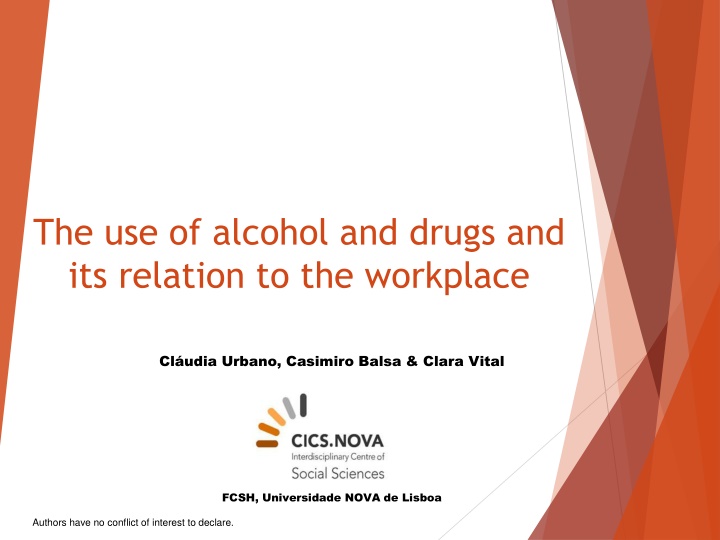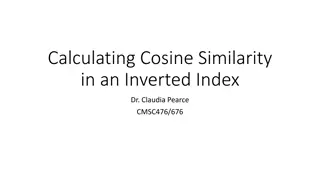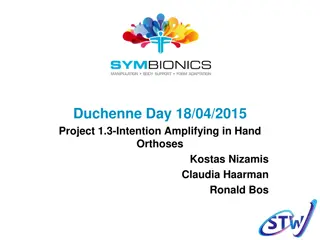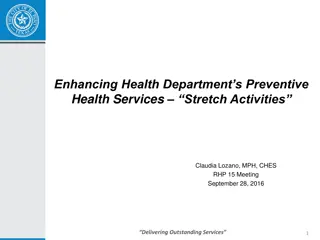
Alcohol and Drug Use in the Workplace: Research Insights
Explore the prevalence and frequencies of alcohol and drug use in the workplace based on research conducted in Portugal. The study analyzes data from the Portuguese General Population Surveys of 2012 and 2017, highlighting differences in usage patterns between the general population and workplace-related individuals. Insights into profiles of users, prevalence rates, and potential implications for various sectors are discussed.
Uploaded on | 0 Views
Download Presentation

Please find below an Image/Link to download the presentation.
The content on the website is provided AS IS for your information and personal use only. It may not be sold, licensed, or shared on other websites without obtaining consent from the author. If you encounter any issues during the download, it is possible that the publisher has removed the file from their server.
You are allowed to download the files provided on this website for personal or commercial use, subject to the condition that they are used lawfully. All files are the property of their respective owners.
The content on the website is provided AS IS for your information and personal use only. It may not be sold, licensed, or shared on other websites without obtaining consent from the author.
E N D
Presentation Transcript
The use of alcohol and drugs and its relation to the workplace Cl udia Urbano, Casimiro Balsa & Clara Vital FCSH, Universidade NOVA de Lisboa Authors have no conflict of interest to declare.
Research context 3rd Portuguese General Population Survey 2012 data analysis of prevalence and frequencies of alcohol and drug use Comparing data for general population and population related with the workplace (employed or unemployed people) Defining a model of survey set of questions regarding the use of substances and the workplace After the analysis of significant literature And the analysis of national and international indicators on the use of alcohol and drugs in the workplace Theoretical concept of workplace population Different from working population = employed Includes unemployed population or others potentially integrated in the workplace 4th Portuguese General Population Survey 2017 new set of questions Brief analysis claudia.urbano@fcsh.unl.pt
Having information on users and non-users: - Prevalence of use - Frequencies of use - Profiles: sex, age, labour characteristics (activity, contract, shift ) - Missing information on: - Labour context - Rules - Availability - Report of situations with colleagues - Use by workplace population Use at the workplace claudia.urbano@fcsh.unl.pt
Alcohol and Drug Use and the workplace 2012 data Sample size: 6.000 15-74 y.o. Weighted data Characterizing users among general population and among workplace population Alcohol use: Slightly higher prevalence among workplace population than among general population - 75,7% vs 73,6% LTP, 63,7% vs 61,1% LYP and 53,2% vs 50,3% LMP Beverage problematic use (AUDIT C test) slightly higher among workplace population (14,8% vs 13,3%) Prevalence is higher among unemployed people Differences between activity sectors and professions Drug use: Similar tendencies between both population, considering workplace population have more young and male people Multivariate analysis: Different profiles of workers (different activities and contexts construction, industry, restaurant industry, transportation industry ) and their relation to the use; Different occupational contexts and the knowledge about prevention policies in the workplace claudia.urbano@fcsh.unl.pt
Characterizing the workplace populations practices 2017 data Sample size: 12.000 15-74 y.o. Weighted data Brief information Workplace population: 47% employed and 13% unemployed Job satisfaction: happy/very happy with current job 4,6% had work accidents during the last 2 years, 4% of them due to alcohol use (more than 16-17% of those who had accidents prefer not to answers if those accidents were related to alcohol or drug use) claudia.urbano@fcsh.unl.pt
LYP: 19,4% used alcohol in working days, 9,4% medicines and 6,5% drugs 4,5% used alcohol often or some times 2h before work shift, 11,8% during meal breaks, 5% during other breaks at work, 2,8% during work time 6,5% frequently drank alcohol during special events promoted by the company (parties, anniversaries, colleagues farewell parties), and 8,8% did it some times; 2,0% say in those events there are no beverage and 22,2% say there are no such events in the company Percentages are lower for medicines and for drugs claudia.urbano@fcsh.unl.pt
Characterizing the workplace policies 2017 data Workplace policies and regulation: 56% workplace doesn t have a health promotion dept. and 64% no health promotion program 19,9% there is regulation: 65,% both on alcohol and drugs 79,4% no prevention/intervention activities related to alcohol and or drug use problems 8,1% tests on drinking and 5,4% on screening drug use, mostly without a defined regularity, and in 75% of the cases is a random selection (while in 17% the test is only to specific groups of workers) 44-50% say the company has no concern at all towards alcohol, medicines and drug use by the employees and 9-12% say the concern is little claudia.urbano@fcsh.unl.pt
Characterizing the workplace and environment 2017 data Availability: 26,4% - the workplace has a canteen/cafeteria 24,8% say beverage are available within a limited quantity and 7,7% without limit 15% say it s easy to get beverages inside the workplace and 41,1% easy to get in the closest neighbourhood Problematic cases and use of substances: 75,1% say there are no cases among colleagues, 6,4% few cases (10% don t know how to answer) Missing work Frequently Some times Rarely Never Hangover Alcohol at work 0 20 40 60 80 100 Company s culture: 19,8% say there are alcohol drinks at lunch time, parties or business lunch promoted by the company claudia.urbano@fcsh.unl.pt
Final remarks Prevalence on alcohol (2012) among workplace population was slightly higher than among general population Demographic structure is not the same: more young and male people among workplace population Different profiles of workers and their relation to the use of and intensity of use (eg. binge drinking) for each psychoactive substance Adding information on the use of alcohol (and drugs) during working time, working breaks, and consequences at work by its use Adding information on the use of alcohol (and drugs) in work context The use by the self The use by colleagues The company s policies on availability, use and testing The company s culture on including beverage in the company social activities claudia.urbano@fcsh.unl.pt
Thank you for your attention Cl udia Urbano, Casimiro Balsa & Clara Vital FCSH, Universidade NOVA de Lisboa












